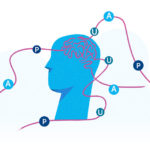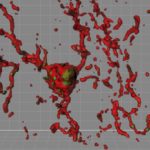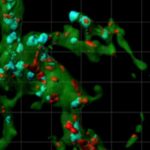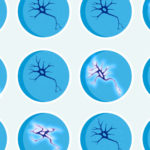A new angle on the cause of Alzheimer’s disease: Accumulating brain mutations
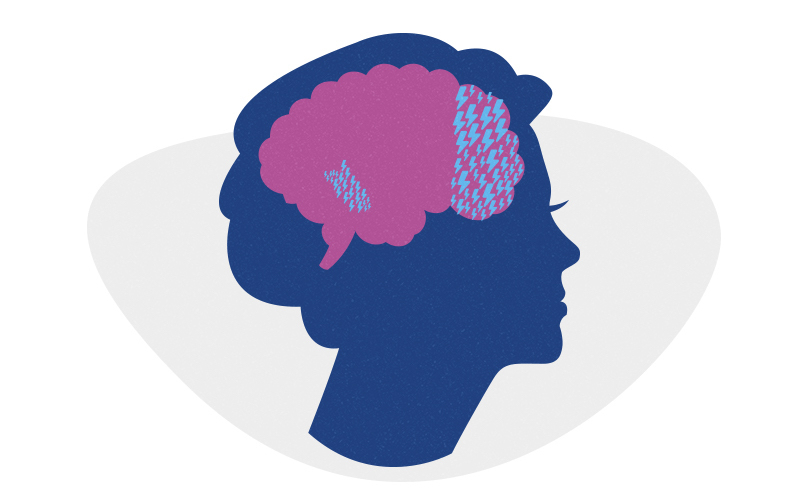
Alzheimer’s disease is marked by a loss of functional neurons in the brain. But what causes this loss? A new study reveals that people with Alzheimer’s have an abundance of newly acquired mutations in their neurons — more than people of the same age without Alzheimer’s, and enough to disable genes important to brain function.
“Cells have repair pathways to undo DNA damage, but in Alzheimer’s disease, neurons can’t keep up with the repairs,” says Christopher Walsh, MD, PhD, chief of the Division of Genetics and Genomics at Boston Children’s Hospital and a senior investigator on the study. “So the damage is permanent and cumulative. This work provides a new way of thinking about neurodegenerative diseases like Alzheimer’s, suggesting that they impair neurons’ ability to use their genome.”
The study, published in Nature on April 20, may also help connect the dots between loss of neurons and the well-documented accumulation of amyloid-β and tau proteins in Alzheimer’s disease.
Mounting DNA damage in Alzheimer’s
As we age, our neurons naturally acquire mutations. The researchers, led by first authors August Yue Huang, PhD, of Boston Children’s Hospital, and Michael B. Miller, MD, PhD, of Boston Children’s and Brigham and Women’s Hospital, wondered how this process might differ in Alzheimer’s disease. To find out, they analyzed whole-genome sequencing data from 319 individual neurons from the prefrontal cortex and hippocampus of people with Alzheimer’s and neurotypical people of similar age.
Not only did the people with Alzheimer’s have more mutations in these cognitively important brain areas, but the pattern of the mutations was unlike that in the normally aging brains. The changes — switches in certain DNA bases or “letters” — were of a kind known to be induced by reactive oxygen species (ROS), chemicals that can oxidize and damage DNA. The team also found direct evidence of increased oxidation in the neurons of people with Alzheimer’s.
That’s where amyloid-β and tau may come in. Both can induce production of ROS, which are increased in the brains of people with Alzheimer’s. Microglia, immune cells in the brain shown to be abnormally activated in Alzheimer’s, could also play a role, says Huang. “Neuroinflammation introduced by microglia might be one cause of oxidative damage to the genome,” he says.
The researchers note that genes important to brain function may be especially vulnerable to mutations. These genes tend to be larger than average, presenting a bigger target that is more likely to be “hit” and disrupted. They are also more often turned on.
“Genes with a higher level of expression in the brain — and therefore more likely to have critical functions — had a higher mutation burden,” says Huang.
Alzheimer’s treatment implications?
It’s tempting to speculate that antioxidants could have value in Alzheimer’s. The researchers want to further investigate how oxidation of the genome occurs and the role that inflammation and immune reactions may play.
“We want to look at other neurodegenerative diseases like frontotemporal dementia, ALS, and chronic traumatic encephalopathy to see whether there’s a limit to the number of mutations in brain that a neuron can tolerate,” says Walsh. “We’ve demonstrated that in Alzheimer’s disease, neurons cannot tolerate widespread oxidation of the genome. That results in permanent damage that can’t be fixed.”
Walsh, a Howard Hughes Medical Institute investigator, was co-senior investigator on the study with Eunjung Alice Lee, PhD, of Boston Children’s Hospital, and Michael Lodato, PhD, of the University of Massachusetts Chan Medical School.
Learn more about research in the Division of Genetics and Genomics at Boston Children’s.
Related Posts :
-

Tau protein changes correlate with Alzheimer’s disease dementia stage
Research into Alzheimer’s disease has long focused on understanding the role of two key proteins, beta amyloid and the ...
-

Targeting synapse loss in Alzheimer’s to preserve cognition — before plaques appear
Currently, there are five FDA-approved drugs for Alzheimer’s disease, but these only boost cognition temporarily and don’t ...
-

Immune cells "sculpt" brain circuits -- by eating excess connections
The image above and the movie below show an immune cell caught in the act of tending the brain. The ...
-

Motor neurons made from patients' cells reveal possible ALS drugs and targets
Amyotrophic lateral sclerosis (ALS) is a severe, fatal neurodegenerative disorder causing loss of motor neurons and voluntary muscle action. While ...


